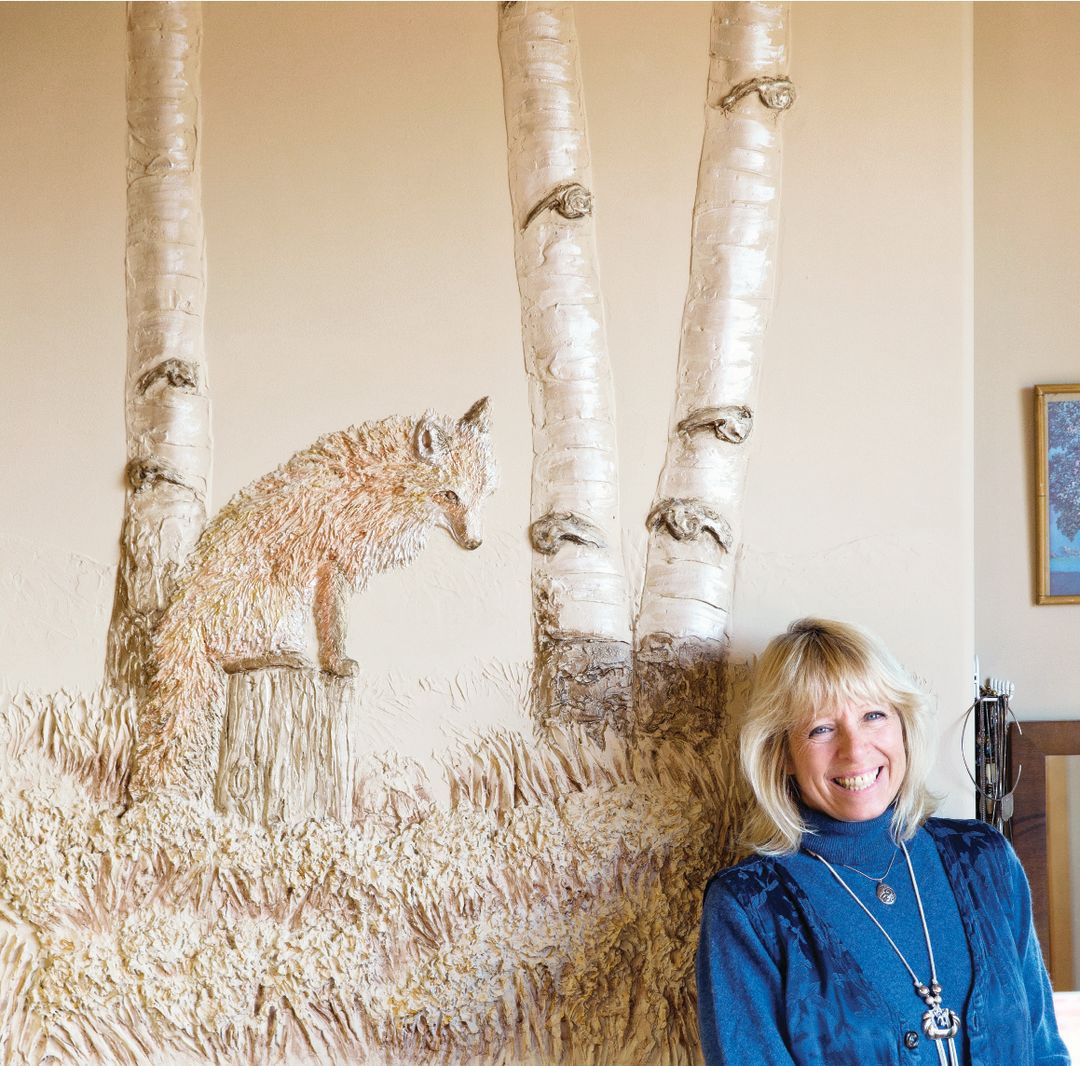Local Artist Transforms Walls by Animating Them

Artist Bonnie Wakeman of Norling Wakeman studios.
Image: Rebecca Stumpf
For years now, Bonnie Norling Wakeman has wowed clients, hotelgoers, and interior designers by transforming the most mundane feature of any big house—yawning, two-dimensional walls—into bona fide masterpieces. Her medium is bas-relief—essentially, flat sculpture. You’ll find it on palaces in Babylon and at the temple at Angkor Wat. And in Dan Cabela’s foyer in Austin, Texas, where a sculpted herd of elephants lingers at a watering hole, with trees, sunsets, and mountains behind them.
“She knocked it out of the park,” says Cabela, a member of the Cabela sporting goods dynasty and a part-time Vail resident who plans to hire Wakeman to decorate the family vacation home near Vail. “It entirely changed the entryway. It went from something that was fairly boring to something that’s extremely interesting. It’s my favorite piece of art in the house.”
As for her process, Wakeman is cagey about the details: the plaster, the paint, the glaze. After all, she’s a magician; magicians never reveal their secrets. But she will allow that her leaves, which look lifelike, are made of fine silk.
“You can touch it,” she says. “You can run your hand over it and feel the aspen and the bear. There’s the three-dimensional richness of it.”
Wakeman sometimes works like a thief in the night. She “sneaks” into homes when the owners are away, and they return to find art. If she didn’t have their permission, she’d be Thomas Crowne in reverse.
Doug and Sigrid Gray, for example, left their home at the Sonnenalp Golf Club for a weeklong RV trip. While the Grays were away, Wakeman played, moving in and creating two sculptures. One is a giant aspen stand in their soaring foyer; the other is a small copse in a nook in the living room.
“The detail is spectacular,” says Doug Gray. “It really tied the house together.”
But Wakeman’s pièce de résistance resides in the home of Ivy Larson. Larson was named after her great-great-grandfather, Ivy Baldwin, a tightrope walker as famous in his day as Man on Wire Philippe Petit. Baldwin walked across El Dorado Canyon and nearby Boulder Canyon dozens of times, until he was 82 years old.
Little Ivy Larson would sit rapt at her grandmother’s feet, hearing stories of Baldwin’s bravery: fighting in the Spanish-American war, piloting a balloon for the emperor of Japan, performing for a president. It inspired in her pride and courage. She became a daredevil, too, eventually performing acrobatically at Sea World.
So when Larson moved into her new home on a hilltop in Cordillera, she decided to enshrine Baldwin’s myth. She hired Wakeman to fill her house with bas-relief: quaking aspens and nesting chickadees; Ivy the Daredevil, a small brave figure against a cloudy blue sky; and nearby, the coup de grace, a scene of Baldwin crossing Boulder Canyon on a tightrope. Every day, Larson looks at that sculpture and finds courage, passing it along to a daughter pursuing a dream of being a cheerleader at the University of Texas—a modern daredevil, ponytail and all.
At Olympia, Phidias made Athena breathe. At the Vatican, Michelangelo made Mary weep. A mile and a half above sea level, the legends of this valley may be more human in scale, but—just like the great masters—Bonnie Wakeman uses lathes, trowels, and a surfeit of imagination to breathe new life into old stories. And make them soar.






































